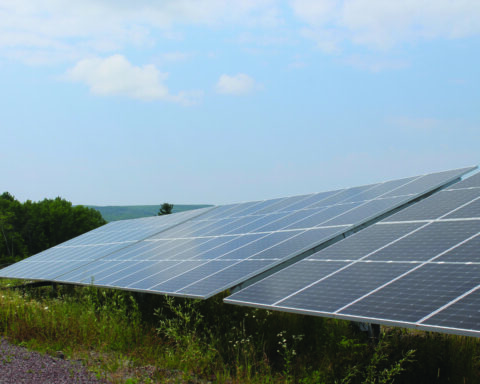When prominent entrepreneur Jigar Shah took over as head of the Department of Energy’s Loan Programs Office (LPO) in 2021, he had one primary mission: to get “dollars out the door.”
Now the office, which offers financing to clean energy technologies that struggle to borrow from banks and received a huge boost of money from the Inflation Reduction Act (IRA), is rushing to do just that before president-elect Donald Trump takes office in January. The incoming president, flanked by Republican majorities in both chambers of Congress, is expected to target unspent funds under the IRA, including LPO programs – putting at risk billions of loan dollars yet to be granted or finalized.
With Inauguration Day looming, the office has increased its activity in recent weeks. Since last Monday alone, the LPO announced four new conditional commitments for loans and loan guarantees and finalized a pending offer.
On Tuesday, long-duration energy storage company Eos closed a $303.5 million DOE loan guarantee to help it scale production. The day before, the DOE stated it planned to lend up to $7.5 billion to finance two electric-vehicle battery-manufacturing plants in Kokomo, Indiana. And one week earlier, the agency announced a conditional loan guarantee of nearly $5 billion to finance Grain Belt Express Phase 1, an interregional transmission line that will run between Ford County, Kansas, and Callaway County, Missouri.
Last Monday, the agency also announced conditional commitments for a direct loan of $6.6 billion to Rivian to build an EV manufacturing plant in Stanton Springs North, Georgia, and a loan guarantee of $290 million to Sunwealth to deploy up to 1,000 solar photovoltaic systems and battery energy storage systems across 27 states.
Clean energy funding in doubt over expected Republican backlash
Under the Biden administration, LPO has so far doled out just under $55 billion in funding across 32 deals for battery and EV manufacturing, nuclear reactors, “clean” hydrogen facilities, virtual power plants and critical minerals projects. The majority of the LPO’s investments have gone to Republican districts, according to a Politico analysis.
Most of the financing deals LPO has announced – about $41 billion worth – remain conditional, meaning the loans or loan guarantees are not yet finalized and depend on the companies meeting certain benchmarks.
Legal experts say that while the LPO’s 14 closed loans, which total more than $13 billion in investments, should remain safe from Republican backlash, delaying or undoing conditional funds could be much easier. “Immediately following inauguration of the new president, there is likely to be a period of inaction on financial assistance awards that are in negotiation and on announced funding opportunities,” Hogan Lovells attorney Mary Anne Sullivan wrote.
A Republican-majority Congress could potentially roll back not-yet-obligated funding in order to help offset the costs of a likely extension of Trump’s 2017 tax cuts, which are estimated to add $4.6 trillion to the national debt over the next decade.
As of November 30, the office had 212 outstanding applications with a total of $324 billion in loans requested. In November, LPO raised its estimated remaining loan authority to nearly $400 billion.
The LPO was created in 2005 to support innovative clean energy projects – or in Shah’s words, to “build a bridge to bankability” for technologies that haven’t yet reached the at-scale deployment needed to attract commercial lenders. The Inflation Reduction Act supercharged the office’s lending authority, taking it from $40 billion to more than $400 billion.
It’s unclear what will end up happening to the loan program with a Republican trifecta in office. Project 2025, the Heritage Foundation’s blueprint for the next Republican president, proposes eliminating the LPO altogether. Billionaires Vivek Ramaswamy and Elon Musk, who have been tasked by Trump to lead a new task force called the Department of Government Efficiency, may also target the office in their sweeping proposals to slash federal programs and personnel. (Musk’s EV company, Tesla, received a $465 million loan from the office in 2010.)
Other lawmakers have suggested that the LPO could be reformed to finance more energy sources favoured by Republicans and Trump’s pick for Energy secretary, fracking company CEO Chris Wright, such as nuclear and geothermal. “The LPO needs to have all energy, if we go forward with it at all,” Representative Brett Guthrie, a Republican from Kentucky, told Politico’s E&E News.
DOE officials noted that local economic growth and jobs could be jeopardized should LPO investments be curtailed.
“There is steel in the ground and job openings at new or expanded facilities around the country,” a DOE spokesperson said in a statement. “It would be irresponsible for any government to turn its back on private sector partners, states, and communities that are benefiting from lower energy costs and new economic opportunities spurred by LPO’s investments.”
This story was originally published by Canary Media. It has been edited to conform with Corporate Knights style.
Photo by Ajay Suresh.







